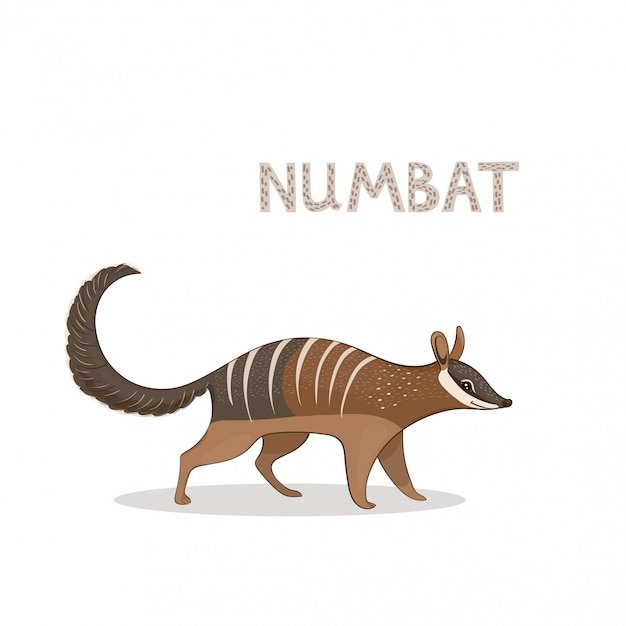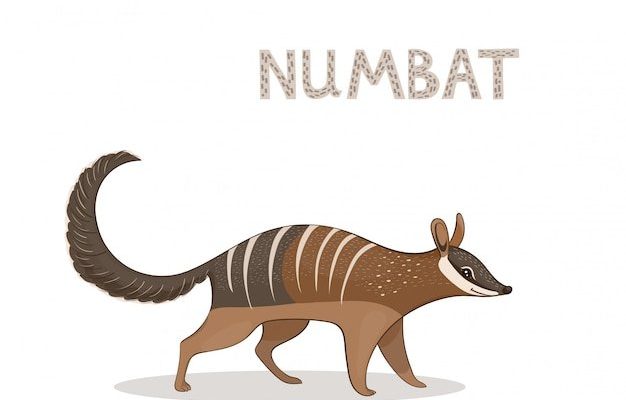
You might be wondering, why should we care about a small marsupial from Australia? Well, the numbat’s story isn’t just about its survival in a specific habitat; it also reflects broader themes of environmental change and the importance of biodiversity. So, grab a cup of coffee, and let’s explore the remarkable evolutionary journey of the numbat.
What is a Numbat?
The numbat, also known as the banded anteater (yes, it has a nickname!), is a native Australian marsupial that primarily feeds on termites. With its elongated snout, the numbat is perfectly designed for reaching into tiny crevices to snag its prey. This tiny champion of the insect world is only about the size of a cat. So, it packs quite a punch despite its small stature.
Interestingly, numbats are unique in the marsupial family. Unlike many other marsupials, which have a pouch to carry their young, female numbats have a tiny pouch that is only present for a short time to protect their newborns. After a few months, the little ones start to venture out, usually sticking close to mom. It’s a bit like the way we feel compelled to watch over our kids, making sure they don’t get into any trouble!
The Origins of the Numbat
The story of the numbat traces back millions of years, evolving from a common ancestor shared with other marsupials. This ancestor was likely a tree-dwelling creature, and over time, different groups branched off to adapt to various environments. While their relatives became more versatile, the numbat stuck to its termite-hunting ways.
Around 30 million years ago, during the Oligocene epoch, the ancestors of today’s numbats started to drift toward their current ecological niche. The continent of Australia was quite different back then, filled with lush forests and plenty of insects. The numbat’s evolutionary path reflects a fascinating story of adaptation and survival that’s intertwined with the changing environment.
The Numbat’s Unique Features
So, what exactly makes the numbat so special? Its physical characteristics play a big part. The numbat has a long, narrow snout that helps it reach deep into the hollows of trees and soil where termites hide. Its keen sense of smell is essential here—think of it as having a superpower that directs it to its next meal.
Another striking feature is its fur. The numbat’s coat is a combination of reddish-brown and white stripes, which not only makes it distinctive but also helps it blend into its surroundings. This camouflage is crucial in the wild, allowing it to hide from potential predators like eagles and foxes. It’s like wearing a disguise that helps keep you safe!
Adaptations to the Australian Environment
Numbats have evolved various adaptations to thrive in Australia’s diverse environments. A key part of their survival toolbox is their diet—primarily consisting of termites. This specialization means they don’t have to compete with many other animals for food, making them quite unique in their ecological niche.
Their ability to dig into termite mounds and eat large quantities of them daily is impressive. In fact, a single numbat can consume thousands of termites in a day. And since they are nocturnal, they can avoid the heat of the day, making their hunting efforts even more effective. If you think about it, it’s a bit like having a secret strategy that helps them win at the game of survival!
Conservation Status and Challenges
Unfortunately, the numbat is currently classified as endangered. Habitat loss due to agriculture, urban development, and the introduction of predators like foxes have all taken a toll on their population. Here’s the thing: while numbats have thrived in their unique niche for millions of years, they’re now facing challenges they didn’t encounter in the past.
Conservation efforts are underway to help protect these marsupials. This includes habitat restoration and breeding programs to boost their numbers. Organizations are also working hard to educate the public about the importance of the numbat and what we can do to help preserve its future. It’s a collective effort—one that reminds us that every species plays a role in the broader tapestry of life.
Where to Spot a Numbat
If you’re itching to see a numbat in its natural habitat, your best bet is to head to western Australia, specifically the Dryandra Woodland and the Nambung National Park. These areas are known for their thriving numbat populations and provide a glimpse into the unique ecosystems these adorable marsupials call home.
Keep your eyes peeled, as these little guys can be quite elusive! Their natural instincts to hide and blend in mean that spotting one might take a bit of patience. But trust me, witnessing a numbat darting about its habitat is nothing short of magical.
Final Thoughts
The evolutionary history of the numbat is a testament to the resilience and adaptability of life. From its unique adaptations to the challenges it faces today, this small marsupial plays an important role in our understanding of biodiversity and conservation. The numbat’s story is a reminder of how interconnected we all are and the importance of protecting our planet’s diverse species.
So, next time you think about the numbat, remember: it’s not just a cute face with a striking pattern—it’s a living piece of evolutionary history. And as we strive to protect such fascinating creatures, we also work towards a healthier planet for all of us.

